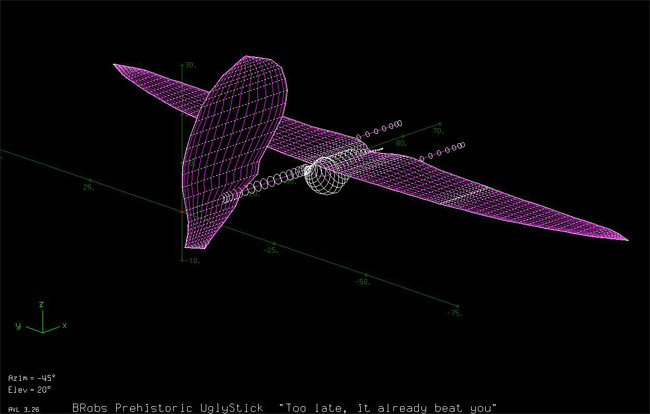New Flying Dinosaur Drone to Resemble Pterodactyl

Pterodactyls may have gone extinct millions of years ago, but a newly designed spy plane could bring the flying reptiles to life, albeit replacing blood and guts with carbon fiber and batteries.
"The next generation of airborne drones won't just be small and silent," the design team announced recently. "They'll alter their wing shapes using morphing techniques to squeeze through confined spaces, dive between buildings, zoom under overpasses, land on apartment balconies, or sail along the coastline."
Called Pterodrone, the spy plane is about the size of a crow but with a much larger wingspan that reaches nearly 32 inches (80 cm).
Its design will be inspired by one of the savviest movers of the Cretaceous, a pterosaur called Tapejara wellnhoferi. This ancient reptile was a morphing machine. On land, Tapejara walked on four legs before rearing up on its two back limbs and running to reach takeoff speed. Once airborne, the beast could cruise at some 19 mph (30 km/h), according to the researchers.
Then, to snap up fish food, the reptile would bend the tips of its wings up to form a three-mast sailboat structure with its body. The membranous crest atop its head would have served as the third sail, used as a rudder for steering, said Sankar Chatterjee, a paleontologist of Texas Tech University who is working on the bio-inspired craft.
Similarly, the Pterodrone will sport morphing wings and a head crest made of carbon fiber and nylon for such multimodal locomotion.
"The crest is analogous to a vertical tail on an aircraft. However, a vertical tail is actually destabilizing if it is placed on the nose instead of the rear, said design team member Rick Lind, a mechanical and aerospace engineer at the University of Florida. "We are investigating the tradeoff such that the crest provides better turn performance and sensor pointing but also requires the wings to compensate and provide stability."
Sign up for the Live Science daily newsletter now
Get the world’s most fascinating discoveries delivered straight to your inbox.
While the real deal had blood vessels and nerves that served as sensors for temperature, pressure and wind direction, the Pterodrone will be equipped with gyroscopes and a GPS.
"We are trying to build a vehicle that can mimic the motion of the pterosaur, but we are not trying to mimic its nerve/sensory system," Lind told LiveScience.
Pterodrone is in the design phases right now, but its designers hope to complete a walking, flying and sailing prototype in the near future, depending on funding.
The reptile-inspired concept will be detailed in a presentation this week in Houston at a joint meeting of the Geological Society of America, Soil Science Society of America-American Society of Agronomy-Crop Science Society of America, and Gulf Coast Association of Geological Societies.
- Video – Roboswift: The Robotic Bird
- Video – Personal Spy Planes Take Off
Jeanna Bryner is managing editor of Scientific American. Previously she was editor in chief of Live Science and, prior to that, an editor at Scholastic's Science World magazine. Bryner has an English degree from Salisbury University, a master's degree in biogeochemistry and environmental sciences from the University of Maryland and a graduate science journalism degree from New York University. She has worked as a biologist in Florida, where she monitored wetlands and did field surveys for endangered species, including the gorgeous Florida Scrub Jay. She also received an ocean sciences journalism fellowship from the Woods Hole Oceanographic Institution. She is a firm believer that science is for everyone and that just about everything can be viewed through the lens of science.










